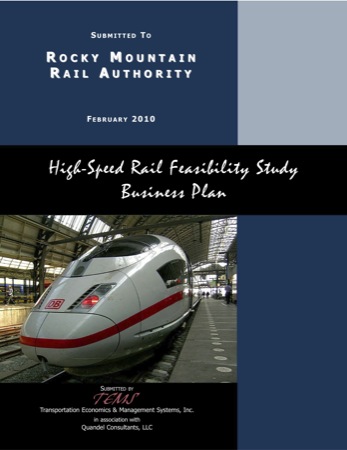Last week, the Rocky Mountain Rail Authority — a grandiose name for something that is little more than a state-funded study committee — proposed to spend close to $22 billion building new high-speed rail lines in Colorado. (Actually, $21.1 billion; the media rounded up to $22 billion.) Based on several highly questionable assumptions, these rail lines are expected to attract more than twice as many passengers as Amtrak’s Boston-to-Washington corridor and generate enough fares to cover their operating costs.
The $21.1 billion is only the initial cost estimate, of course. The real cost is likely to be close to twice that much if only because of political pressures to extend the rail lines to communities not on the proposed routes.
A $1.5 million feasibility study (scroll to the bottom to download the executive summary and the study itself) compared alternative rail technologies with top speeds of 79, 110, 125, 150, 220, and 250 mph. The 150 and 250 alternatives used maglev; the rest were conventional steel wheels on steel rails. The low-speed alternatives were rejected as not attracting enough passengers, while the maglev alternatives were rejected for having capital costs that were nearly three times as much as conventional rail. Two basic routes were considered, one north-south from Cheyenne to Trinidad and one east-west from Denver Airport to Grand Junction with branches to Aspen and Steamboat Springs.








